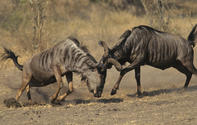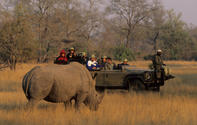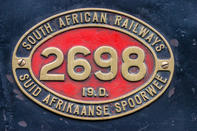In a Precarious Position
From the outset, the odds were stacked against the Sabi Reserve. One of these challenges concerned the political infighting between governmental departments as to who controlled the reserves.

Initially, the reserves were the property of the Native Affairs Department under Godfrey Lagden, but they were transferred to the Office of the Colonial Secretary in 1905, without Lagden’s knowledge or permission. Then, after Union in 1910, the reserves were transferred again to the Transvaal Provincial Administration, under the authority of Johan Rissik. The first game ranger of the park, James Stevenson-Hamilton, or JSH, is both an iconic and iconoclastic figure in the history of the Kruger National Park.
He had to meet and convince a succession of new bosses about the value and viability of the Sabi Reserve. Luckily, in most cases, he found the authorities to be sympathetic to the cause, despite some outspoken opposition from the electorate.
Nevertheless, his position was always precarious as it would have taken nothing more than a notice in the Government Gazette to de-proclaim the reserve and open it up for hunting and settlement. Another problem concerned the Selati railway line, which had been abandoned some distance north of Sabi Bridge due to the embezzlement of funds by the original contractors back in 1893.
Although only around 120 km of track had been completed, this ramshackle railway line ran from Komatipoort over the Crocodile River Bridge to the Sabi River, and it had proved to be a useful link between James Steven Hamilton’s headquarters and the outside world.
Tourism the Salvation of Sabi

James Stevenson-Hamilton, warden in the then re-proclaimed Sabi Game Reserve, was quick to realise that the power of tourism could be the salvation of his precious Sabi and was eager to capitalise on the reserve’s rapidly spreading fame. But he still had to win over many opponents before he could get the legislative and financial power to nationalise the reserve.
Crucially, however, he no longer felt like a lone voice in the wilderness. He could now show that there was indeed a point to ‘keeping the things (animals)’ and was gratified to find that other people could appreciate wild animals as part of their natural heritage.
Marketing the Sabi Reserve

Within a few years, the ‘Round in Nine’ excursion was well-established and South African Railways began to appreciate the huge tourism potential of the Sabi Reserve. The South African Railways publicity department consequently embarked on an aggressive marketing campaign, supported by the general manager of the railways who was an ardent supporter of the reserve. And so, in 1925, a series of wildlife posters to promote the Sabi as a potential public asset was commissioned.
The man chosen for the task was Harry Stratford Caldecott, a Kimberley-born and Paris-trained artist, then living in Cape Town. Caldecott set off for the Sabi Reserve and spent two months travelling through the bush to sketch the wildlife. He proved to be a quick study and fell in love with the bush and its denizens.
When Caldecott met James Steven Hamilton, the two hit it off immediately and they began to discuss appropriate ways to develop the reserve as a tourist attraction. Stevenson-Hamilton would later say of Caldecott that “Until his lamented and premature death in 1929, there was no single man in South Africa who worked more strenuously and successfully for the cause of wildlife preservation in the sub-continent.” Caldecott returned to Cape Town and drew up a variety of marketing materials.
His most famous advert is the stylish ‘Giraffe’ poster that was put up at every railway station in the country. The slogan read (in Afrikaans) “Come with South African Railways to the Transvaal Game Reserve – the most unique sanctuary for wildlife in the world. Visit your National Park.”
 The Kruger National Park (KNP, or simply ‘Kruger’, for short) is the premier game reserve in South Africa. Offering excellent Big Five g...
The Kruger National Park (KNP, or simply ‘Kruger’, for short) is the premier game reserve in South Africa. Offering excellent Big Five g... The first intake of rangers, for the newly formed Sabi Reserve, which later became the Kruger National Park, was assembled on an ad-hoc basi...
The first intake of rangers, for the newly formed Sabi Reserve, which later became the Kruger National Park, was assembled on an ad-hoc basi...